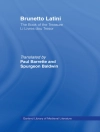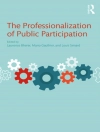Essays examining the complex intertwining and effect of medievalism on modernity – and vice versa.
The question of how modernity has influenced medievalism and how medievalism has influenced modernity is the theme of this volume. The opening essays examine the 2001 film
Just Visiting’s comments on modern anxieties via medievalism; conflations of modernity with both medievalism and the Middle Ages in rewriting sources; the emergence of modernity amid the post-World War I movement The Most Noble Order of Crusaders; António Sardinha’s promotion of medievalism as an antidote to modernity; and Mercedes Rubio’s medievalism in her feminist commentary on modernity. The eight subsequent articles build on this foundation while discussing remnants of medieval London amid its moderndescendant; Michel Houellebecq’s critique of medievalism through his 2011 novel
La Carte et le territoire; historical authenticity in Michael Morrow’s approach to performing medieval music; contemporary concerns in Ford Madox Brown and David Gentleman’s murals; medieval Chester in Catherine A.M. Clarke and Nayan Kulkarni’s
Hryre (2012); medieval influences on the formation of and debate about modern moral panics; medievalist considerations inmodern repurposings of medieval anchorholds; and medieval sources for Paddy Molloy’s
Here Be Dragons (2013). The articles thus test the essays’ methods and conclusions, even as the essays offer fresh perspectives on the articles.
Karl Fugelso is Professor of Art History at Towson University in Baltimore, Maryland.
Contributors: Edward Breen, Katherine A. Brown, Catherine A.M. Clarke, Louise D’Arcens, Joshua Davies, John Lance Griffith, Mike Horswell, Pedro Martins, Paddy Molloy, Lisa Nalbone, Sarah Salih, Michelle M. Sauer, James L. Smith
Tabla de materias
Editorial Note
Medievalism at the End of History: Pessimism and Renewal in
Just Visiting – John Lance Griffith
Medieval Restoration and Modern Creativity – Katherine A. Brown
Crusader Medievalism and Modernity in Britain: The Most Noble Order of Crusaders and the Rupture of the First World War, 1921-49 – Michael John Horswell
From the
Republica Christiana to the ‘Great Revolution’: Middle Ages and Modernity in António Sardinha’s Writings [1914-25] – Pedro Alexandre G. Martins
Moving through Time and Space in Mercedes Rubio’s
Las siete muchachas del Liceo [1957] via Wagner’s
Parsifal in Barcelona, Spain [1914] – Lisa Nalbone
Introduction to Part II
In/visible Medieval/isms – Sarah Salih
Art, Heritage Industries, and the Legacy of William Morris in Michel Houellebecq’s
The Map and the Territory – Louise D’Arcens
Travel in Space, Travel in Time: Michael Morrow’s Approach to Performing Medieval Music in the 1960s – Edward George Breen
Imagining Medieval Chester: Practice-based Medievalism, Scholarship, and Creativity – Catherine A M Clarke
The Anachronic Middle Ages: Public Art, Cultural Memory, and the Medievalist Imagination – Joshua Davies
Medievalisms of Moral Panic: Borrowing the Past to Frame Fear in the Present – James L. Smith
Extra-Temporal Place Attachment and Adaptive Reuse: The Afterlives of Medieval English Anchorholds – Michelle M. Sauer
Here be Dragons: Mapping Space and Time, Medieval and Modern – Paddy Molloy
Contributors












